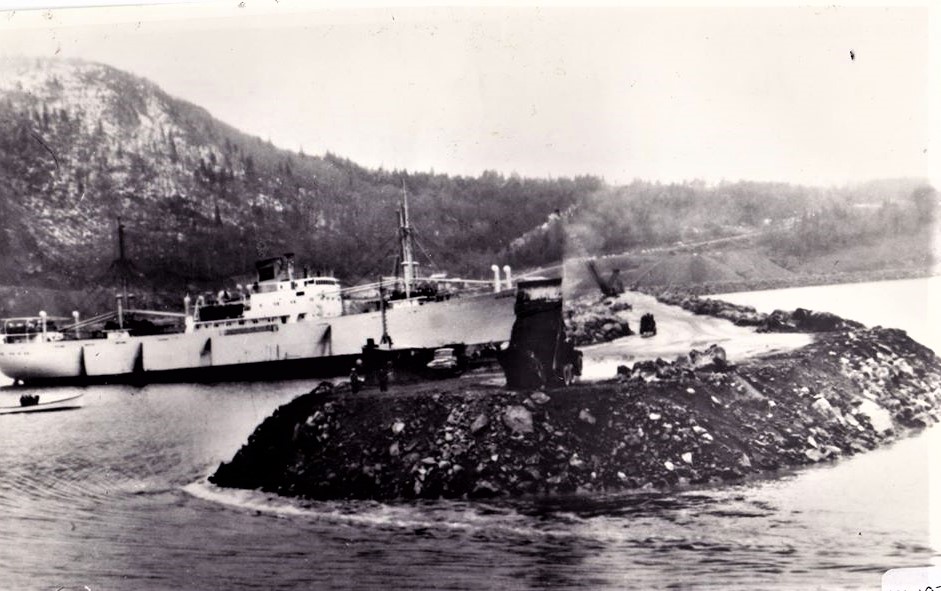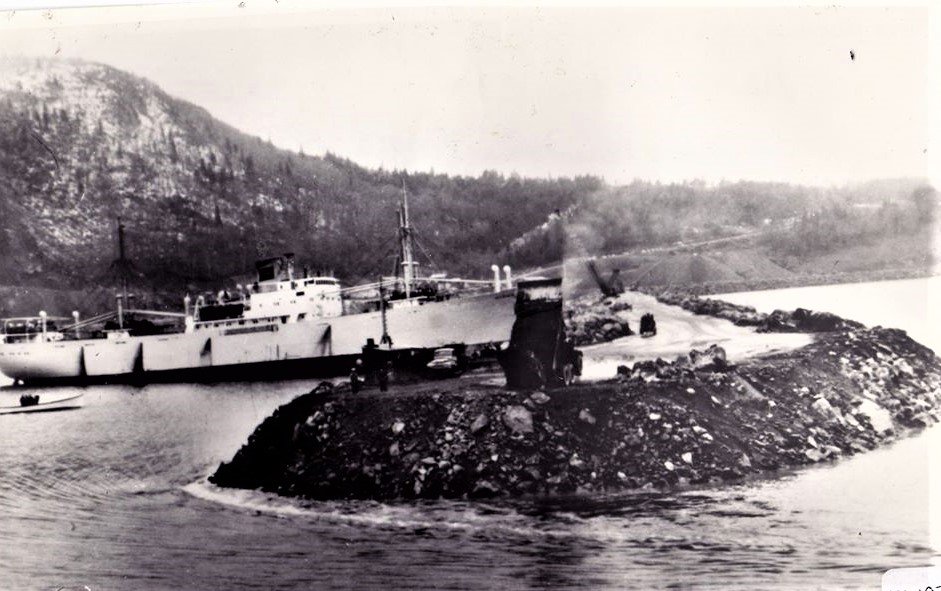On November 29, 1954, Norweigan freighter SS Lionne ran into the #CansoCauseway. It didn’t open until the following year and it was not yet on British Admiralty navigation charts.
#nspoli #cbpoli #NovaScotia #capebreton
@GeoffMacLellan @AllanMacMaster @lloydphines @StraitAreaCoC
#nspoli #cbpoli #NovaScotia #capebreton
@GeoffMacLellan @AllanMacMaster @lloydphines @StraitAreaCoC

The Lionne's crew didn’t know we were in the process of connecting #CapeBreton to mainland #NovaScotia.
Rock aggregate for the construction was quarried at Cape Porcupine, right next to the causeway.
#nspoli #cbpoli #NovaScotia #capebreton
Rock aggregate for the construction was quarried at Cape Porcupine, right next to the causeway.
#nspoli #cbpoli #NovaScotia #capebreton

It took 10 million tons to build because it's 24 metres wide at the top, 192 metres wide at bottom, and 65m deep in some spots. They thought there might not be enough rock to build the Causeway but the quarry is still going strong 7 decades later!
#nspoli #cbpoli #NovaScotia
#nspoli #cbpoli #NovaScotia

The #StraitofCanso used to freeze each winter but the causeway created a world class, ice-free deep-water harbour.
The SS Lionne survived the crash with the Causeway. She met her end on May 21, 1965, on her way from Caen to Montreal when she sprang a leak + was abandoned.
#nspoli
The SS Lionne survived the crash with the Causeway. She met her end on May 21, 1965, on her way from Caen to Montreal when she sprang a leak + was abandoned.
#nspoli

• • •
Missing some Tweet in this thread? You can try to
force a refresh



























